Keeping a snake as a pet is already an unconventional choice, but for some enthusiasts, the allure of danger adds to the thrill. These deadly serpents are not your average companion animals, yet their beauty and mystique make them surprisingly popular among reptile lovers. Let’s explore 17 deadly snakes that have slithered their way into the hearts—and homes—of snake enthusiasts worldwide.Keeping a snake as a pet is already an unconventional choice, but for some enthusiasts, the allure of danger adds to the thrill. These deadly serpents are not your average companion animals, yet their beauty and mystique make them surprisingly popular among reptile lovers. Let’s explore 17 deadly snakes that have slithered their way into the hearts—and homes—of snake enthusiasts worldwide.
1. Black Mamba: Speed and Deadliness Combined

Animalia
The Black Mamba is infamous for its incredible speed and potent venom, which makes it one of the deadliest snakes in the world. Found in sub-Saharan Africa, this snake can strike at incredible speeds, and its venom can kill a person in less than an hour if not treated. Its sleek black appearance and terrifying reputation make it a sought-after pet for experienced handlers, but only the most confident and skilled enthusiasts should consider keeping one. With its venomous bite and lightning-fast reflexes, the black mamba demands the highest level of care and respect from anyone who attempts to handle it.
2. Mangshan Pit Viper: The Rare Jewel of the Snake World
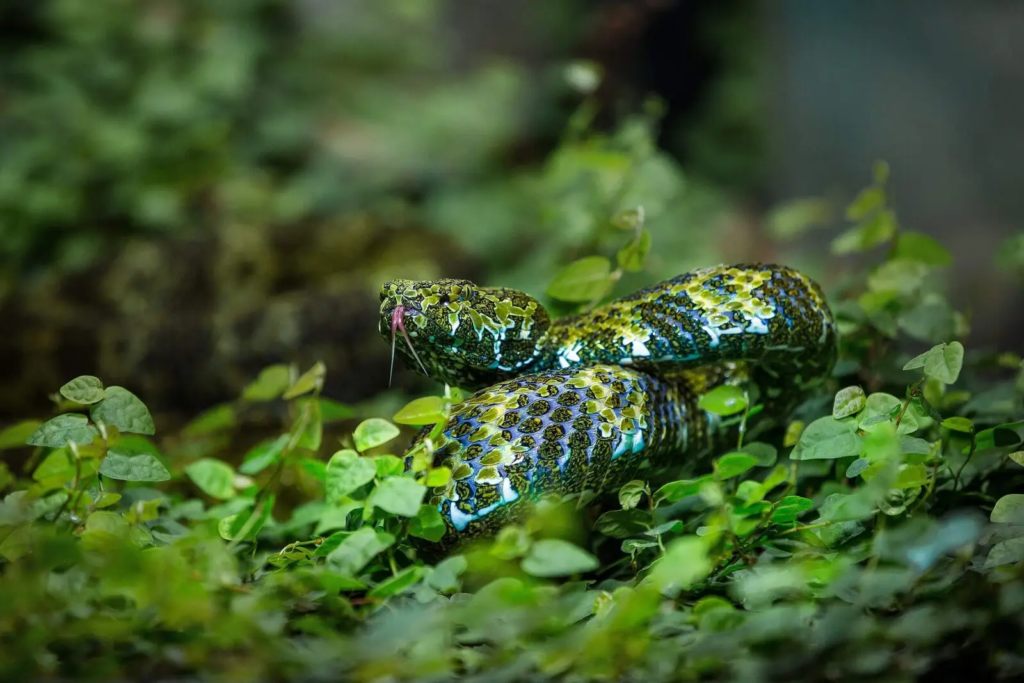
Animalia
The Mangshan Pit Viper, native to the mountainous forests of China, looks almost otherworldly with its moss-like green appearance. Though stunning in its beauty, this snake packs a venomous bite that can cause significant harm. Enthusiasts are drawn to its rarity and unique looks, but keeping one is not for the faint-hearted. It requires a very specific environment to thrive, mimicking the cool, damp conditions of its natural habitat. Even for seasoned snake owners, this venomous creature is a challenge to care for, demanding great respect and careful handling at all times.
3. Eyelash Viper: A Snake with Style

Flickr
The eyelash viper is small but deadly, and its beauty is hard to ignore. Found in Central and South America, this brightly colored snake comes in vibrant shades of yellow, red, and green. Its distinctive scales above the eyes, resembling eyelashes, make it easily identifiable. However, beneath its attractive appearance lies a venom capable of causing extreme pain and tissue damage. As a pet, it’s not for the inexperienced. The eyelash viper requires careful attention, and only the most experienced handlers should consider adding this stunning but dangerous snake to their collection.
4. Gaboon Viper: The Gentle Giant with a Deadly Bite
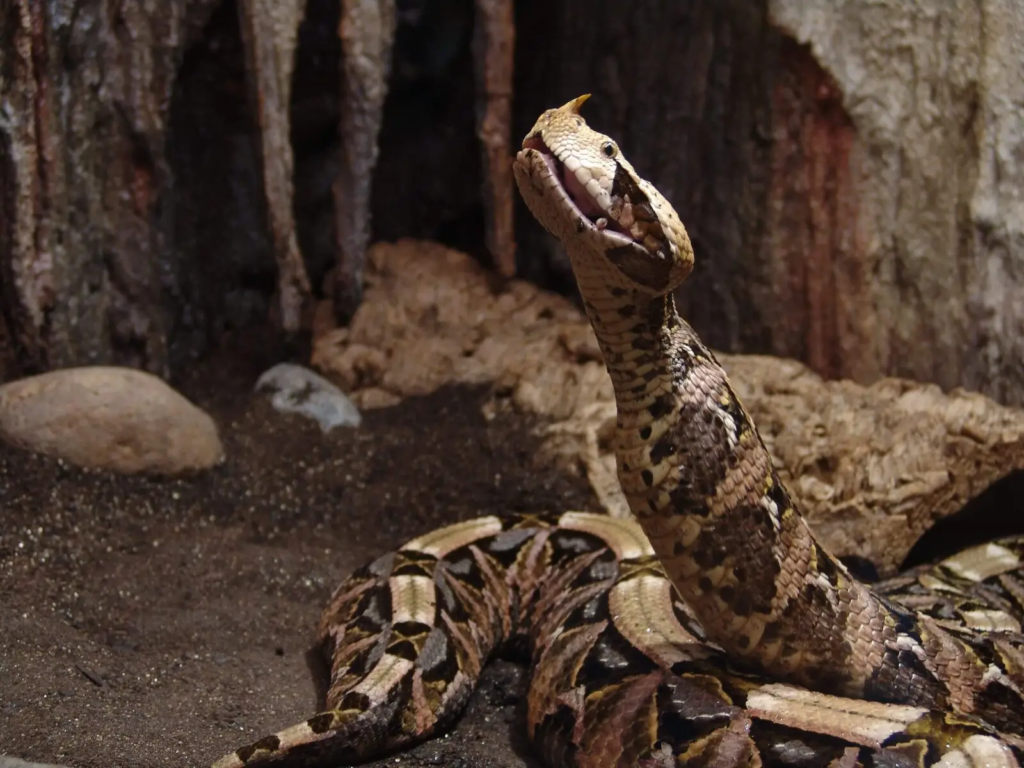
Animalia
The Gaboon viper is known for its massive size and beautiful, geometric patterns. Found in sub-Saharan Africa, this snake can grow impressively large and has the longest fangs of any snake. Despite its intimidating appearance, the Gaboon viper is generally docile in captivity, which makes it popular among experienced snake keepers. However, its venom is highly potent and can cause rapid tissue damage. The snake’s calm nature can be deceptive, making it essential for owners to handle it with respect and care. Its beauty and tranquil demeanor make it an enticing—but dangerous—pet.
5. Boomslang: The Silent Assassin
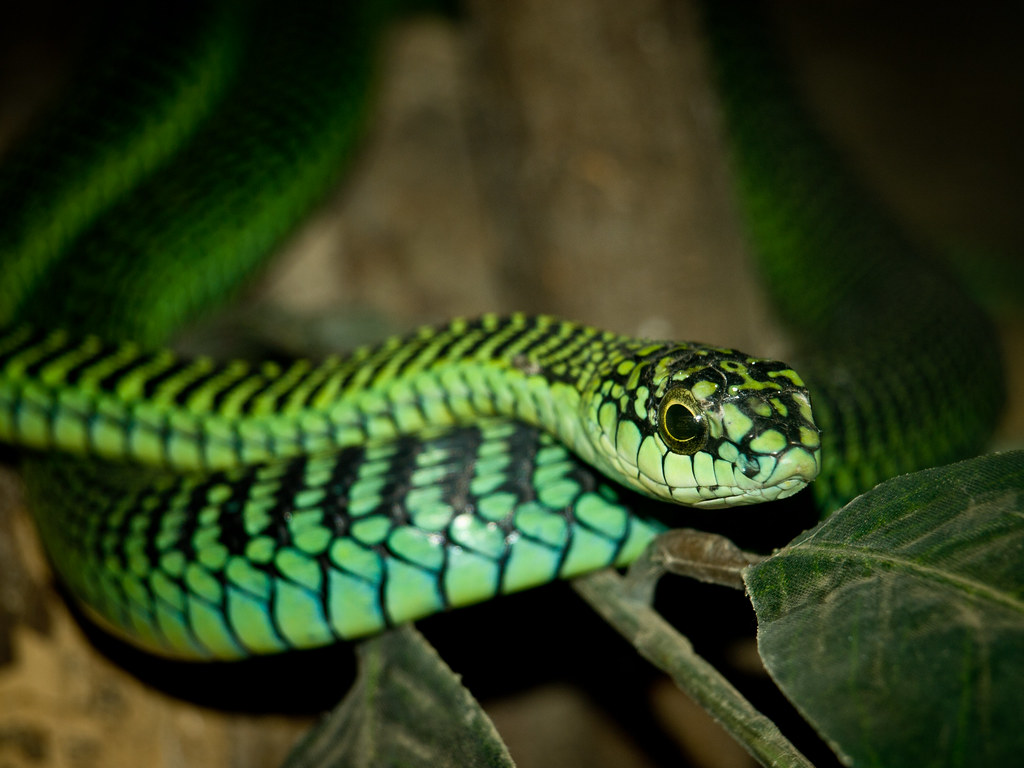
Flickr
The Boomslang is a quiet and elusive snake, known for its incredible ability to camouflage within the African trees. Despite its shy nature, the Boomslang’s venom is deadly, causing internal bleeding that can be fatal without medical intervention. This snake’s slender body and large, expressive eyes make it a fascinating creature to observe, which is why it often appeals to experienced snake enthusiasts. However, its venomous bite makes it a risky pet for anyone who isn’t fully prepared for the dangers. The boomslang requires careful handling and a deep understanding of its behavior to be safely kept in captivity.
6. Rhinoceros Viper: A Horned Beauty with a Punch

Wikimedia Commons
The Rhinoceros Viper stands out due to the horn-like scales on its nose, making it one of the most unique and visually stunning snakes. Native to Africa, this snake is known for its slow movements, but don’t let that fool you—its strikes are incredibly fast when threatened. Its venom contains a mix of hemotoxins and neurotoxins, making it a serious danger to its prey. For those looking to keep a rhinoceros viper as a pet, it’s essential to respect its deadly nature while admiring its beauty. This snake requires careful care and attention to thrive in captivity.
7. King Cobra: The Ruler of the Serpent World
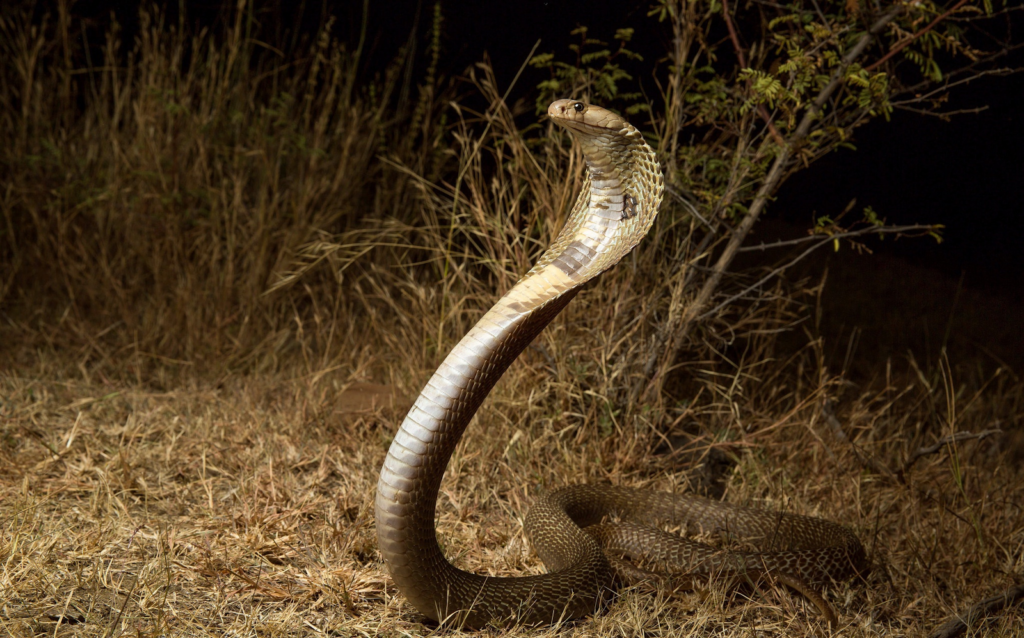
GoodFon
The King Cobra is one of the most iconic snakes in the world, known for its size and intelligence. As the longest venomous snake, it can grow up to 18 feet in length. Found across Southeast Asia, the King Cobra’s powerful venom can kill an elephant, which makes it one of the most dangerous snakes to handle. Despite its terrifying reputation, this snake is highly intelligent and can be trained in captivity, making it a favorite for experienced handlers. However, its potential for danger means it is a pet that should only be kept by those with ample experience and caution.
8. Green Mamba: A Lethal Lime Delight
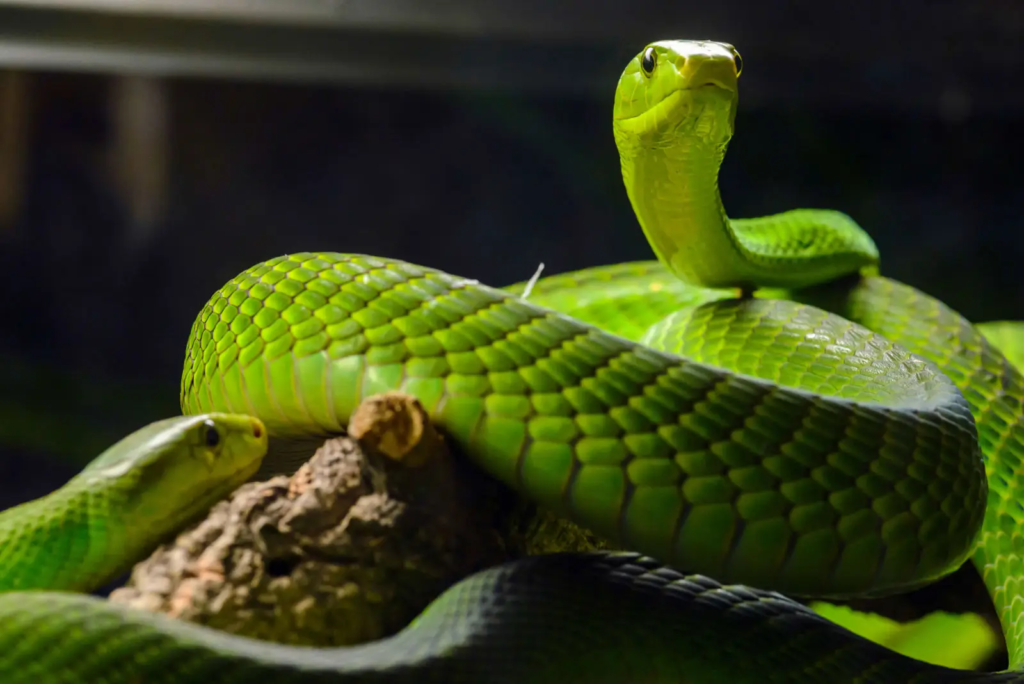
Animalia
The Green Mamba is a snake that combines stunning beauty with deadly potential. With its vibrant emerald green color, it is an undeniably beautiful creature. Native to parts of Africa, the green mamba’s venom can cause respiratory failure within hours if not treated. It’s also incredibly fast and elusive, which makes it a challenging snake to care for. For those who admire its striking color and swift movements, the green mamba offers a thrilling experience. However, only experienced handlers should consider keeping one, as its venomous bite can be deadly if proper precautions aren’t taken.
9. Inland Taipan: The Fiercest Bite in the World
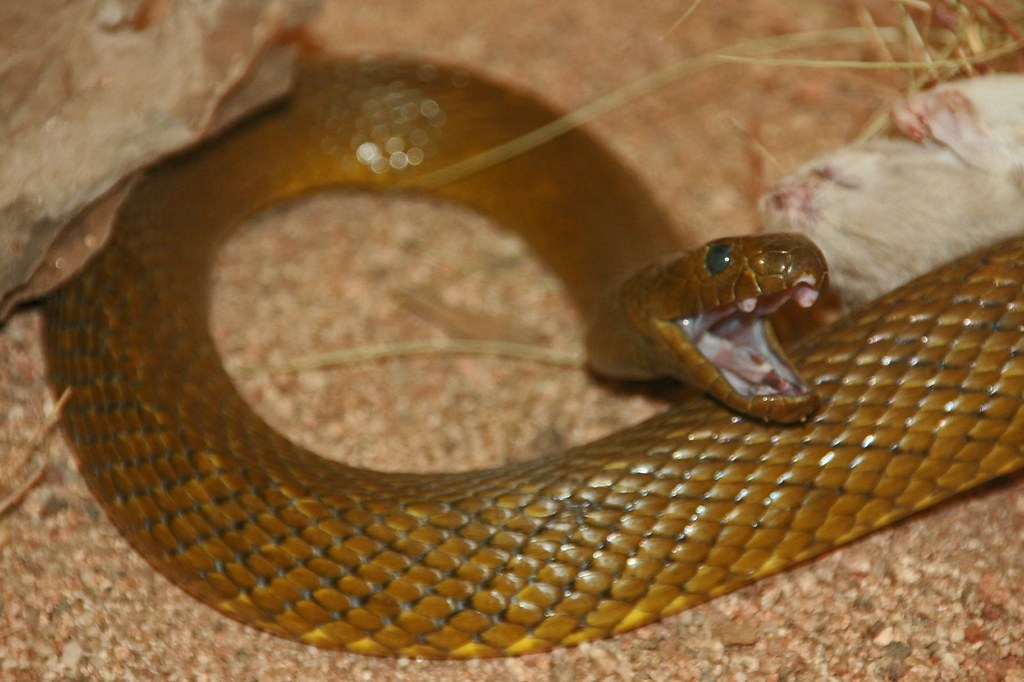
Flickr
The Inland Taipan, also known as the “fierce snake,” is native to Australia and holds the title for having the most toxic venom of any snake. Despite its deadly bite, the inland taipan is typically shy and reclusive, rarely striking unless provoked. This paradox makes it a favorite for snake enthusiasts who appreciate its deadliness from a safe distance. While the venom is incredibly potent, it is extremely rare for the inland taipan to attack humans, and fatalities are uncommon. However, handling this snake should only be attempted by those with the utmost experience and respect for its venomous nature.
10. Eurasian Sand Viper: A Small but Mighty Predator
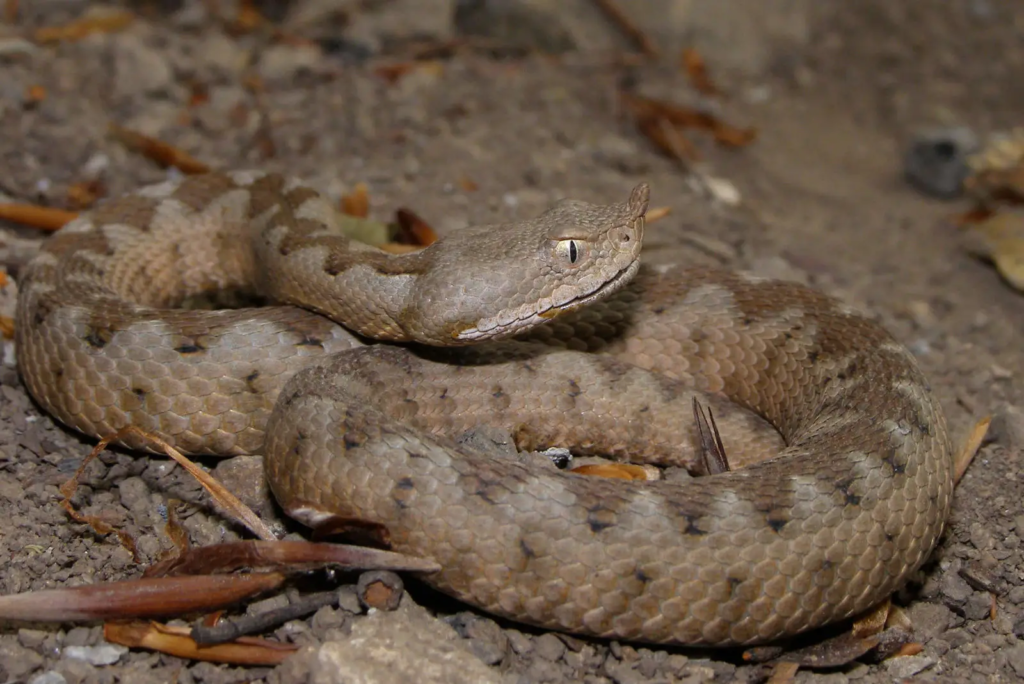
Animalia
The Eurasian Sand Viper is often overlooked because of its small size, but it is a formidable predator. Found in Europe, its venom isn’t as potent as some of the other snakes on this list, but it can deliver multiple strikes in quick succession, making it dangerous nonetheless. Its earth-toned coloration helps it blend into arid environments, where it thrives. Snake lovers appreciate its adaptability and unique characteristics, but keeping one as a pet requires a solid understanding of its behavior. Though not as deadly as other vipers, it still demands respect due to its quick strikes and venomous bite.
11. Eastern Coral Snake: Beauty in Red, Yellow, and Black

Animalia
The Eastern Coral Snake is famous for its vibrant red, yellow, and black bands. This snake, found in the southeastern U.S., is striking but dangerous. Its venom targets the nervous system, causing paralysis and potentially death without prompt medical treatment. The rhyme “red touch yellow, kill a fellow” serves as a reminder of its lethal nature. Though it’s not as aggressive as some other venomous snakes, its venom makes it a high-risk pet. Despite this, its colorful appearance continues to attract snake enthusiasts, though only experienced handlers should even think about keeping one due to the danger involved.
12. Copperhead: A North American Classic

Animalia
The Copperhead is a familiar snake to many, with its coppery-brown tones that help it blend seamlessly into its surroundings. Found throughout North America, it is often considered one of the less dangerous venomous snakes, though it still poses a significant risk. Its venom can cause severe pain, swelling, tissue damage, and in rare cases, death. While not typically fatal, a bite from a copperhead requires immediate medical attention. Its camouflaged appearance and relatively docile temperament make it an appealing snake for collectors. However, it should always be treated with respect and caution to avoid injury.
13. Western Diamondback Rattlesnake: The Iconic Warning Rattle

Wikimedia Commons
The Western Diamondback Rattlesnake is one of the most iconic venomous snakes in North America. With its distinctive rattle and diamond-patterned scales, it’s impossible to mistake this snake for anything else. Found in the southwestern U.S., the western diamondback’s venom can cause serious injury or even death if not treated promptly. The rattle at the end of its tail is an unmistakable warning signal, a unique feature that fascinates many snake enthusiasts. Though not aggressive, it should always be treated with respect. Handling it requires expertise and a solid understanding of its behavior to minimize risks.
14. Bush Viper: A Toxic Beauty
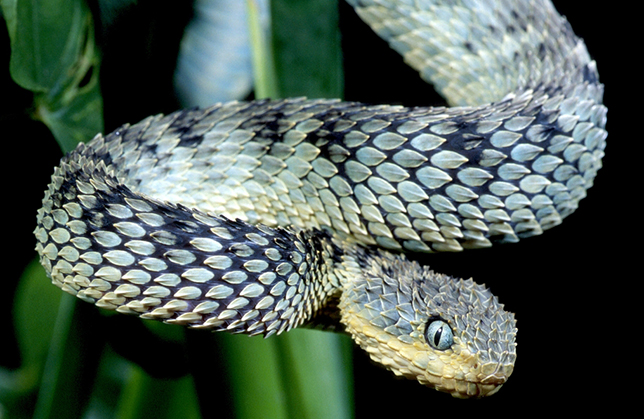
Flickr: julierohloff
Bush Vipers are one of the most visually striking snakes, with their bright colors and intricate patterns. These venomous snakes, found in Africa, come in shades of green, yellow, and orange, making them look like they belong in a fairy tale. However, their beauty comes at a cost. Their venom can cause severe blood clotting and organ damage. While they may seem manageable due to their small size, their toxic potential means that owners must exercise extreme caution. Recreating their arboreal habitat and respecting their venomous nature is essential for keeping them as pets.


